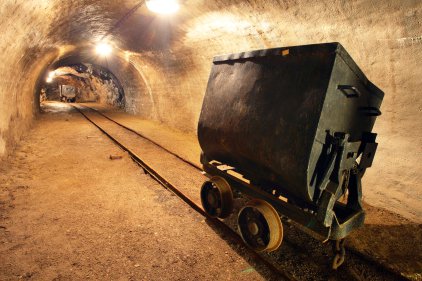MSHA’s emergency lifeline standard upheld in court
Regulation came after multiple-fatality mine disasters

 U.S. Court of Appeals for the District of Columbia Circuit has upheld a decision that the failure to maintain emergency lifelines in a manner for miners to use effectively is a significant and substantial violation of the Federal Mine Safety and Health Act of 1977, regardless of the likelihood of a mine emergency actually occurring at the time of the violation.
U.S. Court of Appeals for the District of Columbia Circuit has upheld a decision that the failure to maintain emergency lifelines in a manner for miners to use effectively is a significant and substantial violation of the Federal Mine Safety and Health Act of 1977, regardless of the likelihood of a mine emergency actually occurring at the time of the violation.
Emergency standards are different
The court unanimously upheld the secretary of labor’s interpretation that, in evaluating the significant and substantial nature of violations of standards that come into play only in the event of an emergency, one must assume the occurrence of the emergency. The court agreed that "emergency safety standards are fundamentally different from non-emergency standards because they are designed to apply meaningfully only in times of emergency."
Under Section 104(d)(1) of the Mine Act, if the authorized representative finds that there has been a violation of a mandatory health or safety standard and also finds that the violation “is of such nature as could significantly and substantially contribute to the cause and effect of a coal or other mine safety or health hazard,” then the inspector is to include that finding in the citation issued for the violation. Such a finding of a significant and substantial violation is a precondition for enhanced enforcement actions under the Mine Act.
In its June 7 ruling, the court upheld a determination by the Federal Mine Safety and Health Review Commission that a mining company’s failures regarding emergency lifelines were in violation of the Federal Mine Safety and Health Act of 1977. The appeal involved Cumberland Coal Resources LP’s Cumberland Mine in Greene County, Pa.
Substantial evidence
Cumberland argued that the commission applied the wrong standard when it reversed an administrative law judge’s determination that the violations were not significant and substantial, and that even if it applied the correct standard, its findings were not supported by substantial evidence.
During a December 2007 inspection, an MSHA special investigator inspected four of Cumberland Mine’s escapeways over a four-day period and issued a citation for each, alleging a violation of the lifeline requirement. The investigator designated each violation as significant and substantial, finding that, in the event of an emergency, requiring miners to use the lifeline and the location of the lifeline would have delayed miners' escape, and that the delay would have been reasonably likely to result in serious injury or death.
Regulation prompted by miners' entrapment, deaths
The regulation at issue in this case was implemented as a result of amendments to the Mine Act enacted in response to three multiple-fatality mine disasters in 2006 at Sago, Aracoma and Darby mines, in which miners who were unable to successfully evacuate mines died. Specifically, the Mine Improvement and New Emergency Response Act of 2006 (MINER Act) requires mine operators to provide flame resistant and directional lifelines in escapeways to enable evacuation. Also in response to the disasters, the secretary of labor promulgated an emergency temporary standard, which became final, requiring lifelines to be located in a manner for miners to use effectively to escape.
“Mine emergency protections need to be in place before an emergency occurs,” said Joseph A. Main, assistant secretary of labor for mine safety and health. “The court recognized that the absence of such protections is a serious matter, to be taken seriously if miners are to have these protections when they need them the most.”
Looking for a reprint of this article?
From high-res PDFs to custom plaques, order your copy today!






.jpg?t=1721257160)
